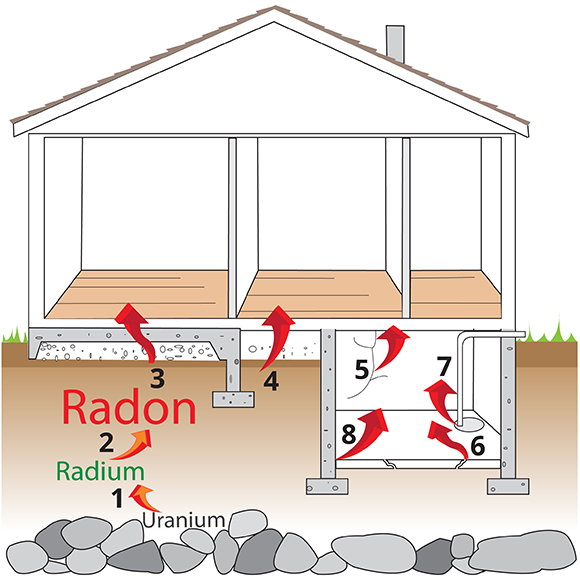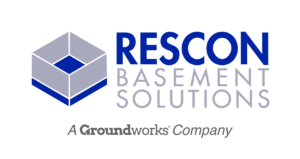Where Does Radon Come From?
Apr 24, 2024
Where Does Radon Come From?
Welcome to our blog where we delve into the mysterious world of radon gas. Ever wondered where this invisible, odorless threat comes from? Join us on a journey to uncover the origins of radon and explore how it can impact your health and environment. Let’s shine a light on the hidden dangers lurking in our homes and beyond.
Outline for “Where Does Radon Come From?”
Curious about the origins of radon? In this blog post, we will explore the source of this radioactive gas and its potential health risks. From understanding where radon comes from to learning how it can be managed, we aim to provide you with valuable insights on this critical topic. Join us as we unravel the mysteries of radon exposure and discover ways to protect ourselves and our loved ones from its harmful effects. Let’s dive into the world of radon and shed light on its hidden dangers. Click here to learn how Rescon Basement Solutions can help!
Radon is a colorless, odorless, and tasteless radioactive gas that occurs naturally in the environment. It is a byproduct of the breakdown of uranium in soil, rock, and water. Radon is considered to be a significant health concern due to its ability to seep into buildings through cracks in foundations, walls, and gaps around pipes.
Exposure to high levels of radon over an extended period has been linked to an increased risk of lung cancer. Understanding where radon comes from and how it can infiltrate our living spaces is crucial for protecting ourselves and our loved ones from potential health risks associated with this silent but dangerous gas.
Overview of Radon
Radon is a colorless, odorless, and tasteless gas that occurs naturally in the environment. It is formed from the decay of uranium in rocks and soil. Radon can seep into buildings through cracks in foundations, walls, or gaps around pipes. Exposure to high levels of radon over time can increase the risk of lung cancer, making it a significant health concern.
Testing for radon levels in homes and workplaces is crucial to ensure safety. The World Health Organization (WHO) identifies radon as a leading cause of lung cancer after smoking. Understanding where radon comes from helps us take necessary precautions to reduce exposure risks.”
Health Effects of Radon Exposure
Radon exposure can have serious health effects on individuals. When inhaled, radon gas decays into radioactive particles that can get trapped in the lungs, leading to damage over time. Prolonged exposure to high levels of radon increases the risk of lung cancer, especially for smokers.
Symptoms may not be immediately apparent, making it crucial to test for radon levels in homes and workplaces regularly. It’s essential to address any elevated radon levels promptly to reduce health risks associated with prolonged exposure.
Sources of Radon
Radon, a colorless and odorless gas, can seep into buildings from the ground below. The primary source of radon is uranium found in soil, rock, and water. As uranium naturally breaks down, it releases radon gas which can enter homes through cracks in floors or walls.
Additionally, construction materials like concrete and bricks may contain traces of uranium that release radon over time. Certain building techniques can also contribute to higher levels of indoor radon. Being aware of these sources is crucial for effectively mitigating radon exposure risks.
Radon in Different Settings
Radon can be present in various settings, from homes to schools and workplaces. In residential buildings, radon can enter through cracks in the foundation or gaps around pipes. It tends to accumulate in enclosed spaces like basements and crawl spaces.
Schools and commercial buildings are also susceptible to radon infiltration, especially if they have lower levels of ventilation. Understanding where radon may lurk is crucial for taking proactive measures to mitigate its risks effectively. Regular testing is essential to ensure a safe environment for occupants.
Reducing Radon Levels
Radon levels in your home can be reduced through various mitigation techniques. One common method is soil suction, which prevents radon from entering the house by venting it out through pipes. Another effective approach is sealing cracks and gaps in the foundation to prevent radon infiltration. It’s crucial to consult a professional radon contractor to assess your home’s specific needs and implement an appropriate mitigation system tailored to reduce radon levels effectively. Taking proactive steps to lower radon concentrations can significantly decrease health risks associated with long-term exposure.
Radon in Drinking Water
Radon can also seep into groundwater and end up in drinking water sources. When you turn on the tap for a refreshing glass of water, you might unknowingly be exposing yourself to radon. This colorless, odorless gas can be ingested through drinking water, adding another potential route for exposure to this harmful substance. It’s essential to consider radon not only in the air we breathe but also in the water we consume daily. Testing your home’s water supply for radon levels is crucial to safeguarding your health and reducing any potential risks associated with its presence.
Radon Exposure Risks
Radon exposure poses serious risks to human health, primarily through prolonged inhalation of radon gas. When inhaled, radon decays and releases radioactive particles that can damage lung tissue over time. Long-term exposure to high levels of radon increases the risk of developing lung cancer, especially for smokers. It is essential to be aware of the potential dangers associated with radon exposure and take proactive measures to mitigate these risks.
Testing for radon levels in indoor spaces is crucial in identifying any potential hazards. Proper ventilation systems and sealing cracks in foundations can help reduce radon concentrations, thus minimizing health risks associated with this harmful gas.
Role of IAEA in Radon Awareness
The International Atomic Energy Agency (IAEA) plays a crucial role in raising awareness about radon and its health risks. Through research, training programs, and collaborations with member states, the IAEA works to promote strategies for reducing radon exposure worldwide. By providing guidance on measurement techniques and mitigation methods, the IAEA helps countries develop policies to protect their populations from the harmful effects of radon gas infiltration.
Moreover, the IAEA supports national efforts to establish effective radon monitoring systems and implement preventive measures in various settings such as homes, workplaces, and public buildings. Collaborating with experts and organizations globally, the IAEA contributes significantly to enhancing awareness about radon as a silent threat that can be mitigated through proactive measures.
Actions to Reduce Radon
Taking action to reduce radon levels in your home is crucial for protecting yourself and your loved ones. The first step is to test your home for radon using a simple testing kit that can be purchased online or at hardware stores. If high levels are detected, consider hiring a professional like Rescon Solutions to mitigate the issue.
Common mitigation techniques include sealing cracks in the foundation, installing a ventilation system, or improving airflow in basements or crawl spaces. These actions can effectively lower radon levels and create a safer living environment for you and your family.
Contact Rescon Solutions Today
Understanding where radon comes from and its potential health risks is crucial for maintaining a safe environment. By being aware of the sources of radon and taking proactive measures to reduce exposure levels, individuals can protect themselves and their loved ones from this harmful gas. Remember, knowledge is power when it comes to dealing with radon, so stay informed and take necessary actions to minimize the risks associated with this invisible threat. Click here to learn how Rescon Basement Solutions can help!

